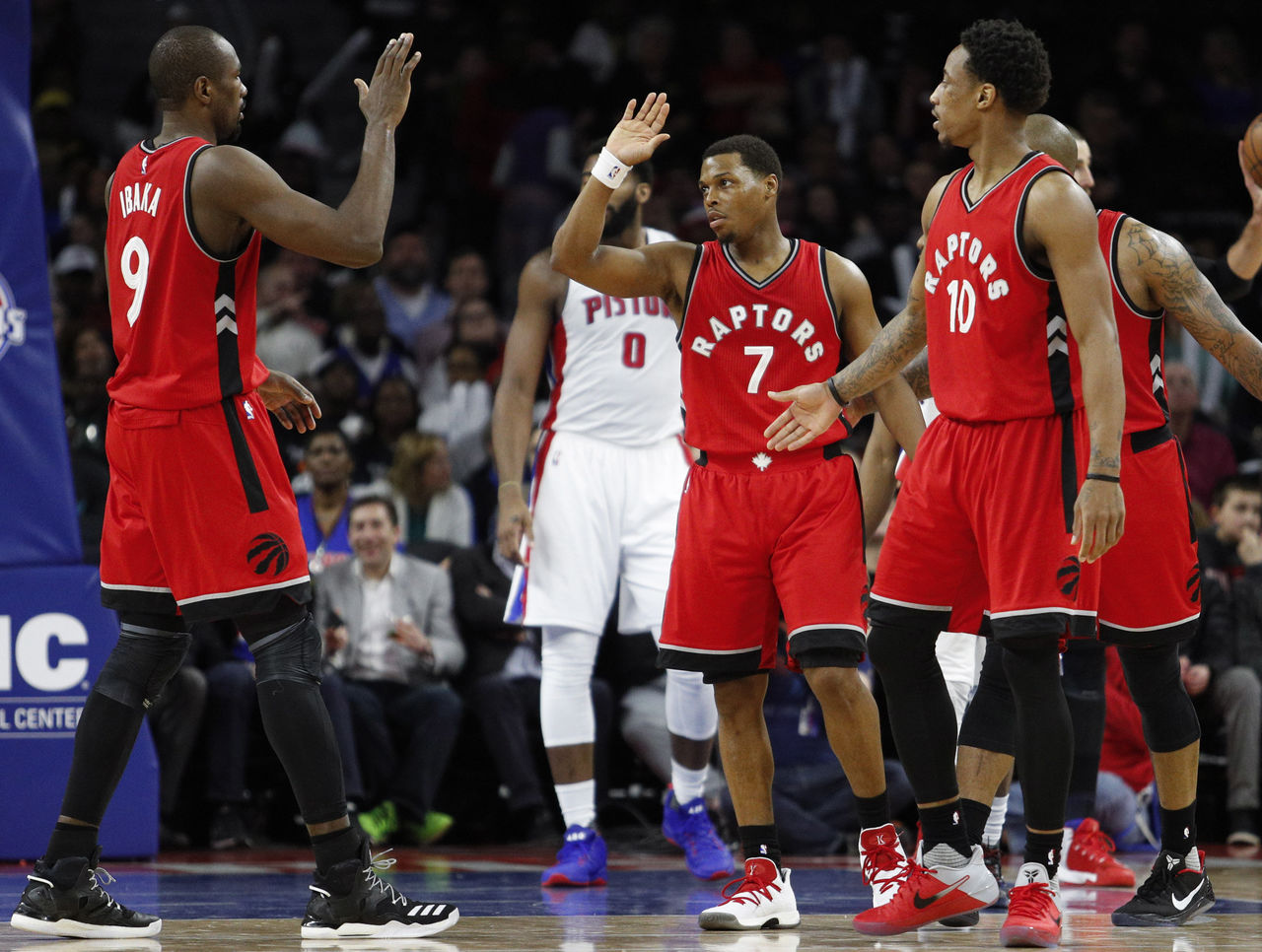Raptors' defense could be Eastern Conference X-factor
Among the number of factors that will determine whether LeBron James represents the Eastern Conference in the NBA Finals for a ludicrous seventh consecutive season, perhaps the biggest question - outside of Cleveland - is how sustainable Toronto's newfound defensive excellence is.
The Raptors' middling defense was somewhat of an afterthought as the team scored at a historic rate over the first quarter of the season, then became Toronto's undoing as the offense slowed down and the Raptors tumbled down the East standings.
That all changed in the span of a week during mid-February, when the Raptors turned Terrence Ross, Jared Sullinger, one of their two first-round picks, and a couple of second-rounders into Serge Ibaka and P.J. Tucker, then lost Kyle Lowry for more than a month to a wrist issue that required surgery.
Suddenly, the Raptors were an inconsistent shooting bunch that relied heavily on an unfamiliar defensive identity, with Ibaka and Tucker steering the ship on that end of the court for a team Mavericks head coach Rick Carlisle recently said is as physical and intimidating as they come.
| Raptors Defense | DRtg (rank) | Opp. eFG% | DReb% |
|---|---|---|---|
| Pre-Deadline | 106.0 (16th) | 51.4 (19th) | 75.4 (25th) |
| Post-Deadline | 102.3 (4th) | 49.1 (2nd) | 78.2 (5th) |
| Ibaka + Tucker sharing court | 98.6 (1st) | 45.0 (1st) | 80.7 (2nd) |
After months spent watching Jonas Valanciunas' inability to cover the ground required in Dwane Casey's defensive system, Raptors fans were awestruck observing Ibaka hedge, help, and recover flawlessly, or watching Ibaka and Tucker come together to blow up an opposing pick-and-roll.
"Both of them are good team defenders as well as individual defenders. That's why we can switch a bit more. That's why Serge at the 5 - guarding pick-and-rolls - is a huge plus for us," Casey said before a recent Raptors home game. "Serge's size is a plus, but if he was 6-foot-5 or 6-foot-4, he'd still be a good defender, just because of his instincts, his athleticism, his speed, and quickness, and his ability to read situations."
That recognition - something Valanciunas and the Raptors' younger bigs haven't quite mastered - allowed Casey to simply plug Ibaka into Toronto's established system, rather than drastically switching schemes in the middle of the season.
"A lot of it is experience. It sounds kind of simplistic, but experience, having been there before, you've seen it so many times, that you know how to gauge speed, how fast the (ball-handler) is going to come, how fast you have to get up there, what he's going to try to do to me once I get there. There's a lot of things you have to factor in and decipher in a split-second, because those guards are quick. If you don't dissect everything and check all the boxes - like an airplane pilot - once you get up there, he's at the basket."
Tucker expanded on their defensive impact in a pregame locker-room conversation with theScore. "When you've got guys who can fix problems two-on-two rather than five-on-five on the defensive end - when pick-and-rolls happen, or pin-downs, or dribble-handoffs - it makes it easier."
Aside from allowing the other three defenders on the court to stay home on their own defensive assignments, Tucker believes he and Ibaka's combination of rim protection, defensive awareness, and versatility encourages the team's perimeter players to defend with more zest.
"It gives you the comfort of knowing you've got somebody behind you, so you know you can play a bit harder, and step up, and do a couple more things," Tucker said. "You know guys behind you have your back and can fix things, even if it is a supposed mismatch. If somebody gets beat, Serge steps up or I step up, we can fix it, and use more time off the shot clock. When it's pretty good defenders switching, it's not like it's going to be dramatic mismatches (if the primary defender gets beat)."

There's reason to believe the Raptors' resistance will be even more overwhelming in the playoffs, as in addition to stabilizing and spacing Toronto's offense, Lowry's return gives the team a superior defender to Cory Joseph at the point of attack.
Between Lowry, Tucker, Ibaka, DeMarre Carroll, Patrick Patterson, and even sophomores Norman Powell and Delon Wright, Casey now has a bevy of intriguing, dynamic, and mobile defensive combinations he can throw at the type of funky Cleveland lineups Tyronn Lue likes to surround LeBron with.
And if Lowry and All-Star backcourt mate DeMar DeRozan can navigate a porous Cavs defense on the other end, James' annually reserved spot in the conference finals - let alone the NBA Finals - suddenly seems tenuous.
Competing with James' Cavaliers and actually beating them four out of seven times without home-court advantage are two entirely different beasts, and the Raptors must first vanquish the freakishly long Bucks before that potential second-round showdown in Cleveland.
Should they get there, however, the refurbished Raps will be better built to beat the Cavs than they were a year ago - when Toronto took two games from the eventual champs in an otherwise lopsided East final - and perhaps more equipped to topple a LeBron-led team than any conference foe has been in four or five years (2013 Pacers, 2012 Celtics), thanks to the type of mid-season, defensive transformation Cleveland is still frantically searching for.
(Photo courtesy: Action Images)